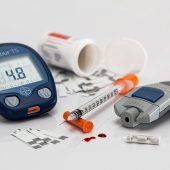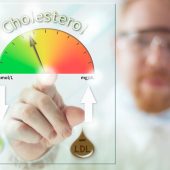You blood oxygen level is an important indicator of how well your heart and lungs are working to distribute oxygen to cells throughout the body.
Low blood oxygen – hypoxemia – can have pretty serious health consequences and even lead to death if not detected and corrected quickly.
If you are at risk of hypoxemia, the easiest way to monitor your blood oxygen is using a pulse oximeter. It’s a small non-invasive device that you clip onto your finger. It measures oxygen saturation (SpO2) and heart rate and displays the measurements on a small screen.
But how to measure oxygen saturation without pulse oximeter? If you don’t have a pulse oximeter, here are other ways you can test you blood oxygen. We include both reliable and untrustworthy testing methods.
Your Smartphone
You can find apps that claim to measure your oxygen saturation. You simply place your finger on the camera and the app measures your blood oxygen level.
The problem with these apps is their high level of inaccuracy. The apps rely on white light to measure oxygen saturation while medical oximeters use red and infrared light, leading to inaccurate measurements.
We don’t recommend smartphone apps even for routine home testing.
Some smartphones like certain Samsung models emit red light from a sensor separate from the camera. They are more accurate than camera-based apps, but still nowhere as reliable as a medical oximeter.
One of the problems is that the Samsung phones use only red light to test oxygen saturation in blood, which reduces accuracy. Secondly, the sensor relies on reflected light to determine oxygen saturation.
An oximeter, in contrast, measures light that passes through your finger using a sensor on the other side.
If you are sure you have healthy blood oxygen levels, you use the Samsung Health app just for fun. But for people at risk of low blood oxygen, no smartphone testing technology is reliable enough.
Smartphones get more inaccurate the lower your oxygen saturation is. So if you are headed towards hypoxemia, measuring blood oxygen with your phone can give you a false sense of security.
Smartwatches and Fitness Trackers
Smartwatches like Apple Watch, Galaxy Watch and Garmin also offer easy oxygen saturation measurements. Many fitness trackers today like Fitbit also include a pulse oximeter sensor.
Most of these devices use the same reflective red light technology as Samsung smartphones, and thus have the same limitations. They also have a unique limitation in that most measure blood oxygen from the wrist, which isn’t as accurate as a finger measurement.
These devices are okay to use for general wellness, as long as you are aware they don’t have guaranteed accuracy. For medical testing however, we do not recommend smartwatches and fitness trackers pulse oximeters.
ABG Test
For people with serious medical conditions like asthma, Covid-19 or heart disease, the best way to have your oxygen saturation tested is at a hospital or lab. They’ll run an ABG or arterial blood gas test.
An ABG test involves drawing a small blood sample and analyzing it in a machine. The results are highly accurate and can be used to make medical decisions.
In addition to oxygen saturation, an ABG test also measures blood pH, bicarbonate levels, and partial pressures of oxygen and carbon dioxide.
Unfortunate, there is currently no home ABG test kit. You have to go to a hospital or lab to get the test.
Bottom Line
There are two ways to measure oxygen saturation accurately: a medical-grade pulse oximeter and an ABG test.
A pulse oximeter is great for routine testing at home. If you don’t have an oximeter, we recommend buying one. They are not expensive. Alternatively, get a regular ABG test.


